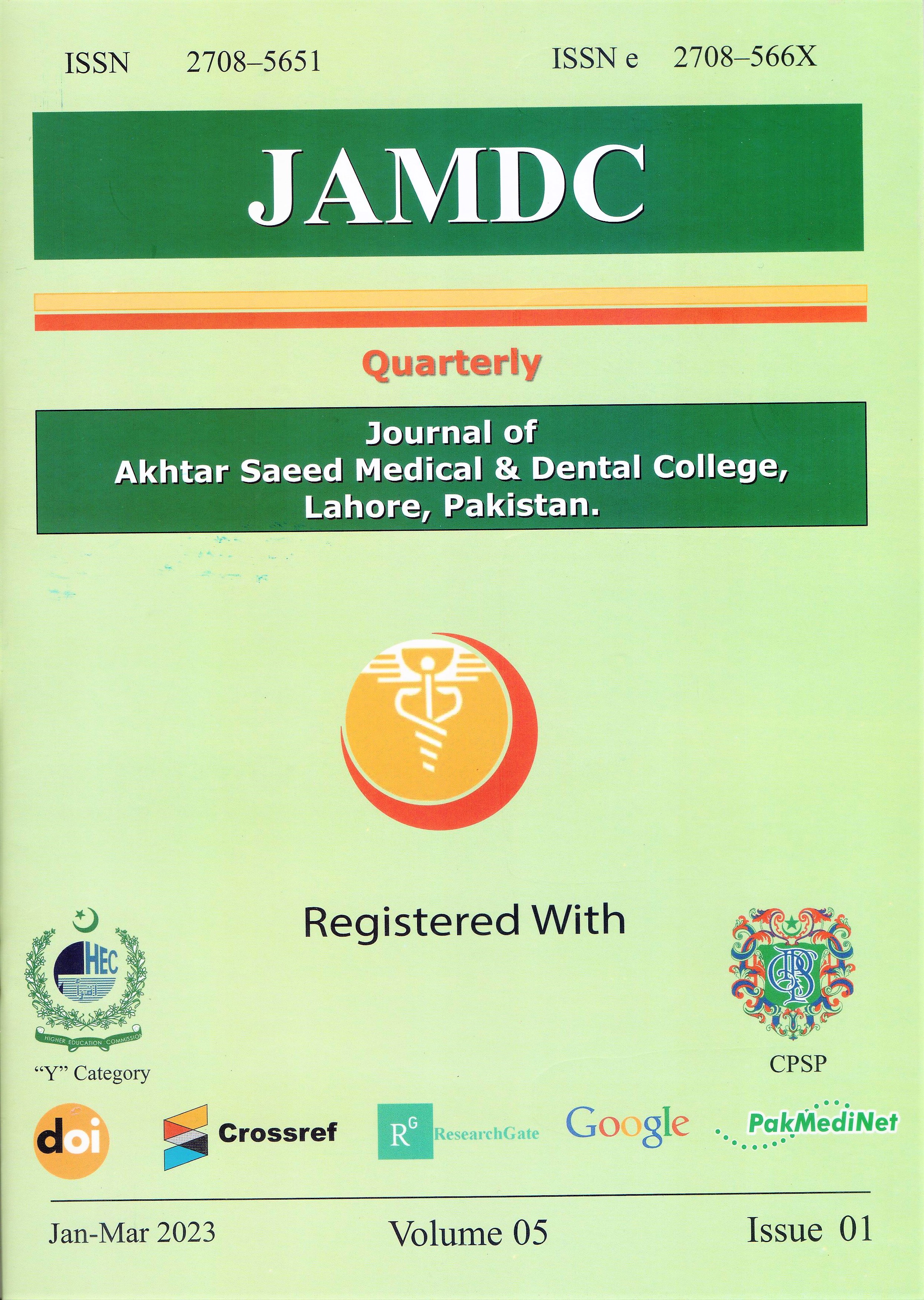TO DETERMINE THE FREQUENCY OF CLOSTRIDIUM DIFFICILE INFECTION IN ANTIBIOTIC ASSOCIATED DIARRHEA
Main Article Content
Abstract
Background:
Antibiotic associated diarrhea (AAD) is characterized by loose, watery stools, three or more times a day after intake of antibiotics. It is important to exclude all other possible causes of diarrhea before labeling it AAD. To determine the frequency of clostridium difficile infection in antibiotic associated diarrhea.
Material and Methods:
It was a cross sectional study done in department of Gastroenterology, outpatient clinic, and ward, AIMC/ Jinnah Hospital, Lahore from 23 May 2019 to 23 November 2020. 234 patients fulfilling the selection criteria were enrolled in the study from the outpatient department and ward of Gastroenterology, Jinnah Hospital Lahore. Informed verbal consent was obtained and patients were subjected to focused history and physical examination as well as their demographic details were recorded. Antibiotics taken by the patient were documented. The antibiotic was withdrawn and the patient was treated per hospital protocol. A stool culture was sent for all patients to see CDI. The patient was labeled as CDI positive if stool culture is positive. All this information was recorded on a predesigned annexure.
Results:
Out of 234 cases of antibiotic induced diarrhea; the Mean Age was 55 ±13 years (minimum was 27 and maximum was 66 years) 56% of cases were male and 44% cases were female, 28.6% of cases had age ˂ 50 years and 71.4% cases had age ≥ 50 years, 54.7% cases used Beta-Lactam antibiotics and 45.3% cases used non- Beta-Lactam antibiotics, 68.4% cases had Bristol grade 6 and 31.6% cases had Bristol grade 7. Out of 234 cases of antibiotic associated diarrhea; 43.6% cases had CD infection and 56.4% cases had No CD infection. Stratification 0f CDI was done with regards to age groups, Gender, type of antibiotic used and Bristol grade; p-value was found to be 0.35, 0.41, 0.4 and 0.03 respectively.
Conclusion:
The majority of patients with antibiotic induced diarrhea were male, had older age, used Beta-lactam antibiotics, had Bristol grade 6 and had a non-CD infection. Regarding CD infection; it was more common in older age, female gender and Beta-lactam antibiotic users; but associations were not significant. However, CD infection was more common in antibiotic induced diarrhea of Bristol grade 7 and the association was significant

